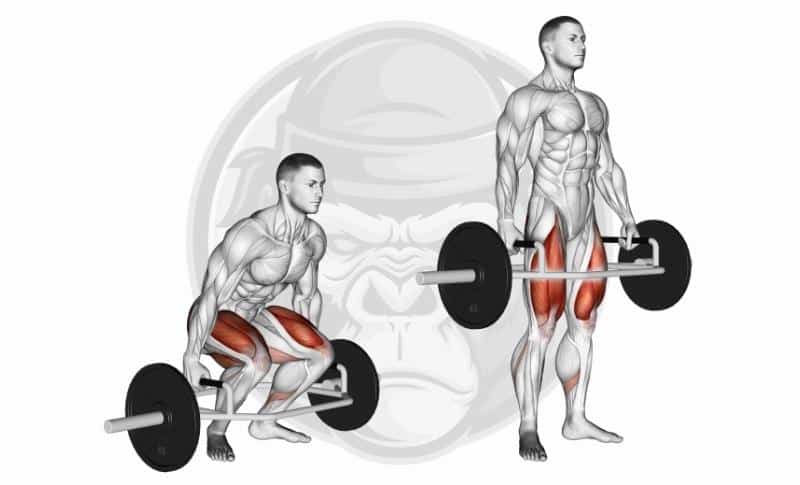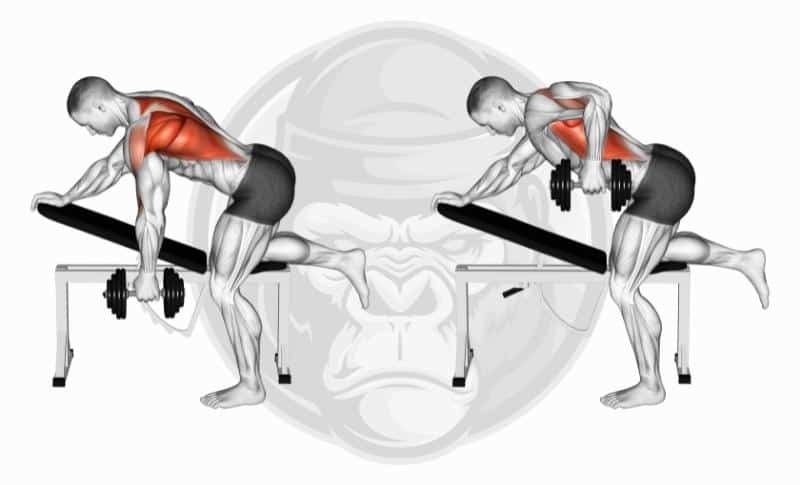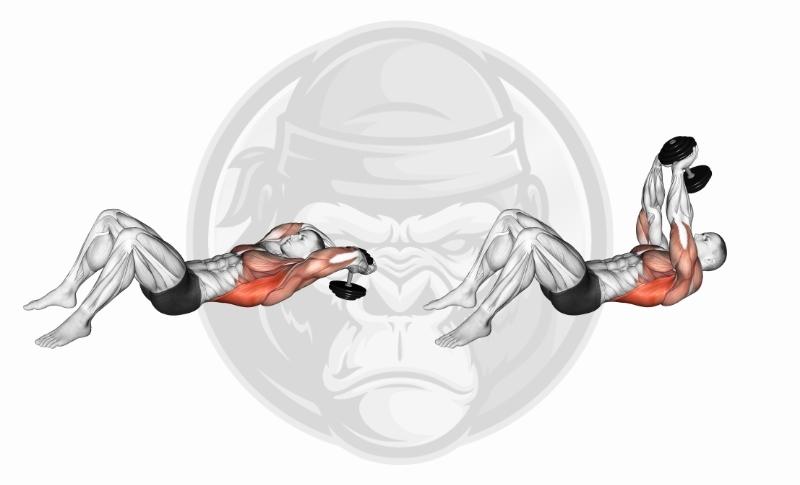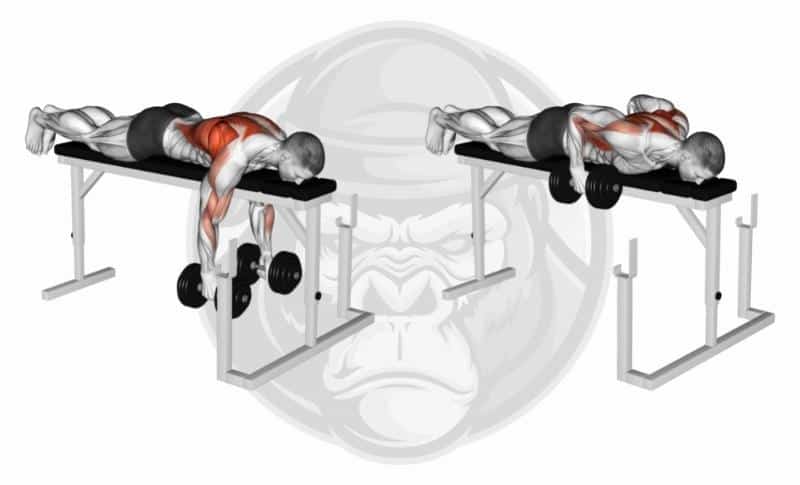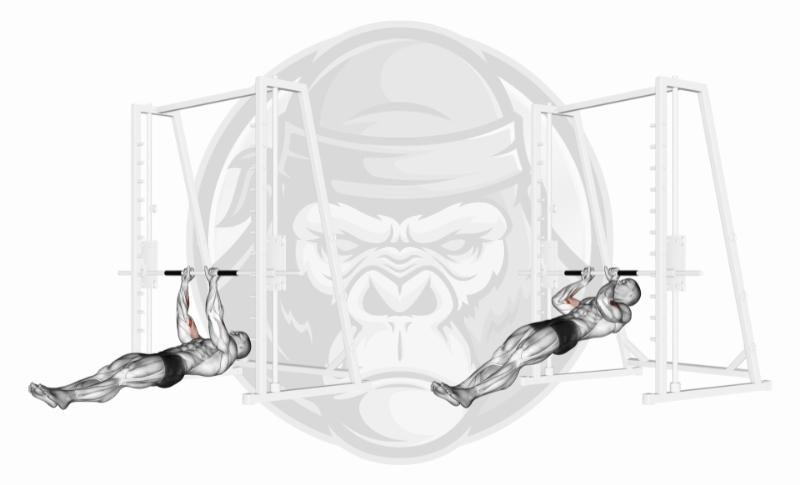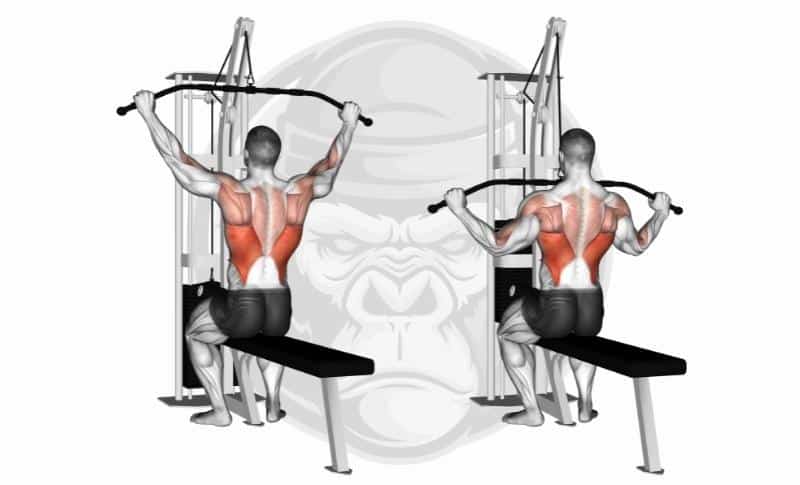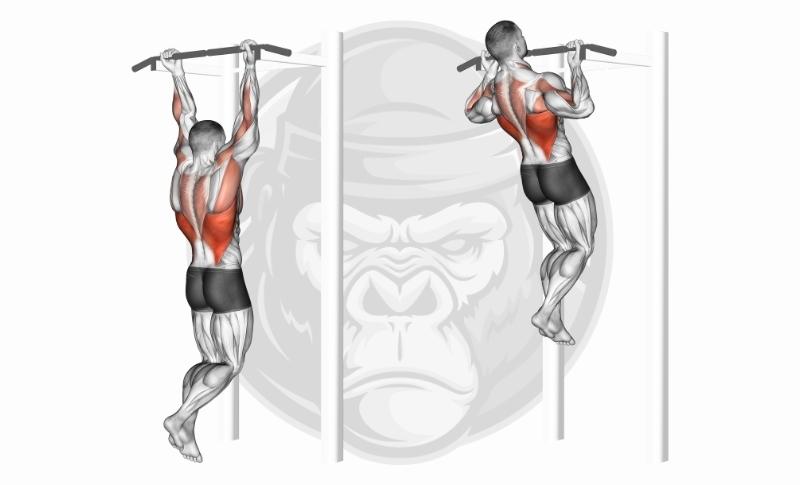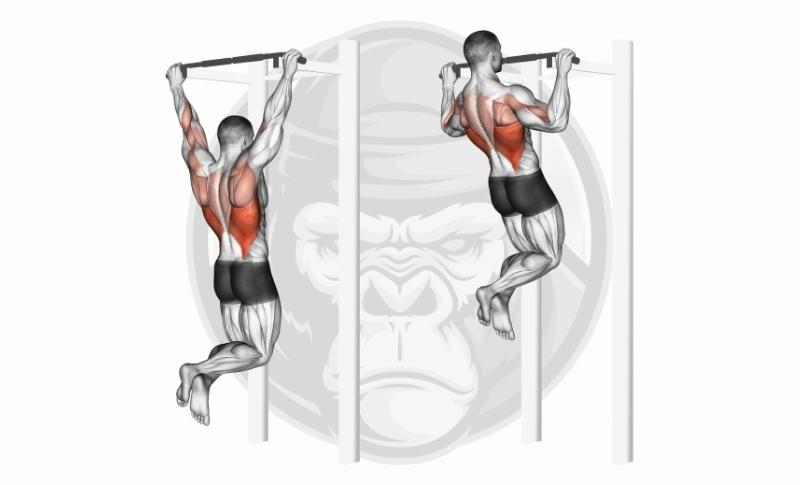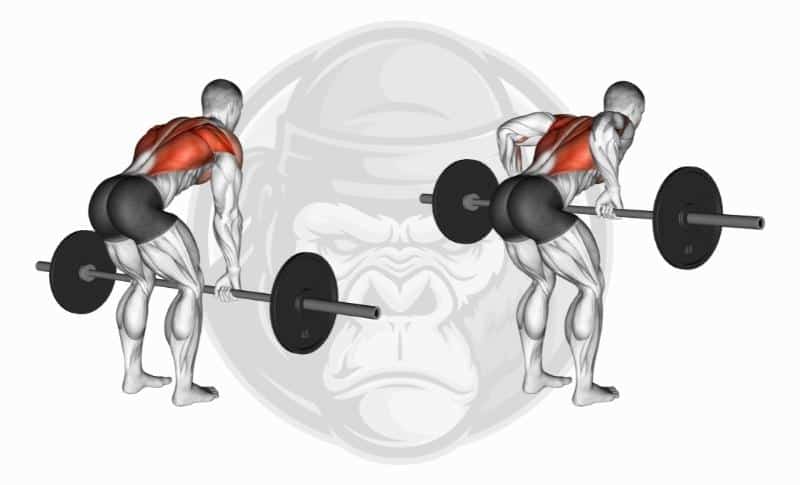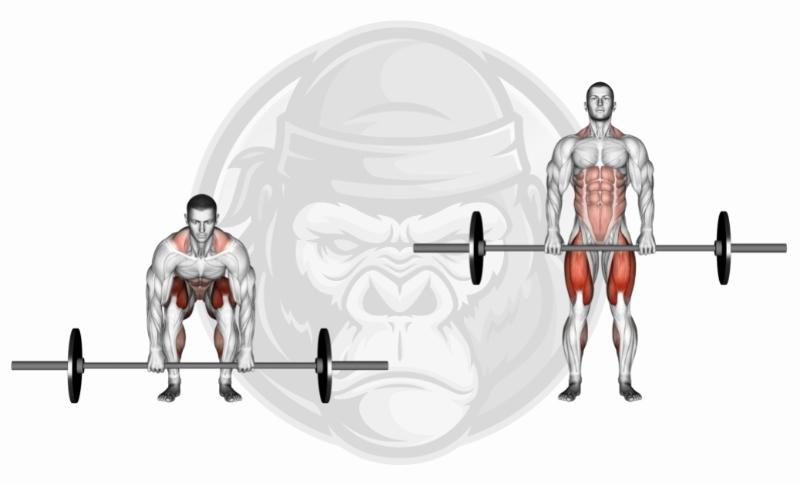Training
The 10 Best Back Exercises
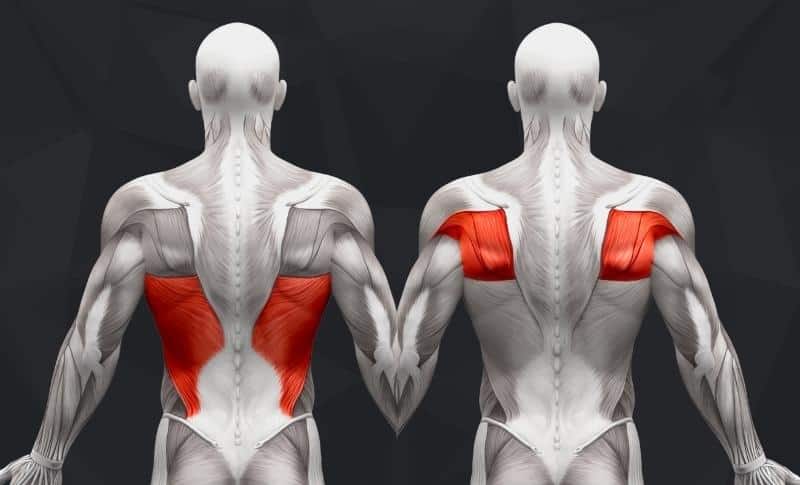
What are the best back exercises?
Some of the biggest muscles in the body are found in the back, and with a broad selection of back exercises to choose from, it can be hard to know where to begin.
Strengthening your back makes a range of other exercises easier to perform, too, so it’s worth including back workouts in your routines.
This guide will help you to choose the best back exercises to use in your workouts.
You’ll find everything from easy to perform workouts using dumbbells to back exercises you can include in full-body sessions based on comprehensive compound movements.
Read on to discover the perfect back exercises to include in your next back workout.
The Best Back Exercises
Our exercise routines are created by determining the best exercises for muscle growth, core strength, and overall health and well-being.
Here’s our list of the 10 best back exercises:
10. Trap-Bar Deadlifts
Great for:
Traditional deadlifts can be daunting for some, particularly those who aren’t confident with their form and worry about risking back injuries.
Enter the trap-bar deadlift, which uses an open bar with raised handles to deliver a great leg and lower back exercise with less overall risk.
How to do it:
Once you’ve loaded your plates, stand in the gap in the center of the trap-bar to begin:
- Reach down and grab the handles, keeping your feet shoulder-width apart
- Push your hips out to the back and lift your head, shoulders, and chest, looking directly forward
- With your back flat, stand up by straightening your hips and knees so the bar comes to mid-thigh height
- Squeeze your glutes at the top, then lower the bar back down to the floor
Why:
The trap-bar deadlift delivers a solid workout to the glutes and hamstrings as well as the back, with less stress on the lumbar spine than traditional deadlifts.
It’s a highly effective compound move that will strengthen your back over time.
When:
Since this is such a big movement with potentially large weights, you should restrict the frequency you perform the trap-bar deadlift to once a week.
Aim to increase the weights for each session.
9. Single-Arm Dumbbell Rows
Great for:
If you’re looking for a back workout that targets a range of muscles in that region and don’t want to worry about unduly loading weights onto your body, the single-arm dumbbell row should be at the top of your list.
This exercise helps to build a strong upper back while also engaging the arms and core.
How to do it:
Grab a bench and a dumbbell with the weight of your preference, then:
- Hold the dumbbell in your right hand and kneel on the bench with your left knee. Keep your body parallel to the bench and lean forward to support yourself with your left hand in front
- With your back horizontal and the weight held down below the shoulder, pull in your core and brace your spine
- Lift the weight towards your armpit with your elbow rising slightly above your shoulders
- Return the weight down to the starting position
Why:
The single-arm dumbbell row engages a selection of back muscles, including the posterior deltoids, latissimus dorsi, trapezius, and rhomboids.
You can use lighter weights to begin with, but on the whole, this exercise is low risk and easy to learn.
When:
The single-arm dumbbell row is suitable for incorporating into sessions regularly but is especially suited to those days when you want to focus primarily on a range of routines focusing on your back muscles.
8. Dumbbell Pullovers
Great for:
We’re sticking with another back exercise which requires a bench and dumbbell for the dumbbell pullover.
It’s another easy-to-learn back workout that also works out your arms and chest as well.
How to do it:
Grab a bench and lay horizontally on your back with the dumbbell in both hands, then:
- Take the dumbbell by one end and hold it with both palms facing up over your chest area
- Engage your core as you lower the dumbbell behind your head with a slight bend to your elbows. Keep your back straight as you perform this part of the exercise
- Once the weight is level with your head, raise it back up to the starting position
Why:
The full motion back over your head and returning to the chest means the dumbbell pullover not only works your back, but it also works the triceps, biceps, and delts.
Your core also gets in on the action, making this great for working the lower and upper abs.
When:
The dumbbell pullover is often overlooked, so why not consider adding this to one workout per week?
It’s a great addition to a full-body workout day or for those who want to work their back as well as other muscle groups.
7. Chest-Supported Dumbbell Rows
Great for:
Rows are popular compound exercises that give your back a great workout but can also be of concern for those with weaker backs or less experience.
The chest-supported dumbbell row sacrifices working the core but still gives you a quality back workout.
How to do it:
You’ll need a bench and pair of dumbbells to perform a chest-supported dumbbell row:
- Incline the bench to 45 degrees the lie on it on your chest, supporting your weight with your toes
- Squeeze the shoulder blades, then lift the weights towards your chest, driving your elbows upwards above your back
- Reverse the move slowly, returning your arms to the hanging position
Why:
Chest-supported dumbbell rows increase upper body strength and improve the overall performance of your shoulders while also targeting back muscle growth.
Lats, traps, rear delts, and rhomboids all come into play, making this a nice exercise to work multiple muscles in each rep.
When:
Chest-supported dumbbell rows can be included several times per week as part of your training routine for increased back muscle growth.
Once you perfect the basic exercise, you can look at other variations to help fine-tune your back muscles as you progress.
6. Inverted Rows
Great for:
This easy-to-perform exercise doesn’t require any weights and can be performed at home, making it perfect for beginners or those on a budget.
It focuses on the upper back muscles while also aiding with grip strength too.
How to do it:
Set the bar on a squat rack to approximately waist height; then you’re ready to begin:
- Lie down under the center of the bar with your legs out in front of you while looking at the ceiling
- Grab the bar with both hands in an overhand grip, your arms fully extended. You should be suspended off the floor with only your heels touching the ground
- Contract your core and glutes, keeping your body in a straight line
- Leading with your chest, pull yourself up to the bar while keeping your body straight
- Pause at the top with retracted shoulder blades, then slowly lower yourself back down to the starting position
Why:
Two of the principal back muscles, the trapezius, and latissimus dorsi, are thoroughly engaged when performing inverted rows.
They also help you to build up strength to make pull-ups easier to do, engaging those muscles involved in scapular retraction.
When:
There’s no harm in performing regular inverted rows, especially if building up your back muscles safely and effectively is on your workout agenda.
5. Lat Pull-Downs
Great for:
Lateral pull-downs are great cable-based exercises that really open up your back muscles and strengthen the latissimus dorsi.
It also helps to promote your spine’s stability and improve your overall posture.
How to do it:
To perform the lat pull-down, sit in a pulldown seat with your feet flat and knees underneath the thigh pad, then:
- Using a wide overhand grip, reach up and take hold of the bar
- While keeping your upper torso stationary, pull the bar down until it comes to level with your chin
- Keep your feet flat and engage your abs as you perform this motion until your elbows can’t go any further back
- Slowly return the bar to the top, controlling the ascent rather than letting the weights slam back down
Why:
In addition to working the latissimus dorsi, secondary muscles including the trapezius, rhomboid, and biceps all get a look in as well.
They don’t place too much stress on your body, so they can work great for back exercises for beginners.
When:
Since this really works the large back muscles effectively, you should consider including this at least once a week as part of your training schedule.
4. Chin-Ups
Great for:
Another great bodyweight exercise guaranteed to hone your back muscles is the chin-up, a popular movement that can be leveraged to hit your chest, arms and abs as well.
How to do it:
To perform a chin-up:
- Hang onto a pull-up bar with an underhand grip placed at shoulder width
- Bend your knees and cross your lower legs, engaging your core as you hang
- Pull your body up until your chin is level with your hands on the bar
- Pause as your biceps experience maximum tension before lowering back down to the start position
Why:
With each repetition working your triceps and biceps, forearms and wrists, as well as lats and shoulders, it’s hard to find a bodyweight exercise that hits this many muscle groups.
Add these to a full-body routine regularly for noticeable gains over time.
When:
Chin-ups are perfect exercises for full-body sessions, but their versatility makes them great for a range of other scenarios.
If you want to increase overall endurance, include chin-ups in your daily workout.
3. Pull-Ups
Great for:
A similar exercise to the chin-up is the pull-up, which takes many of the same principles but with a different grip.
This grip makes the pull-up a great exercise for focusing on the lats while still working the biceps.
How to do it:
To perform a pull-up:
- Hang from the bar with your hands slightly wider than your shoulders in an overhand grip
- Depress your lats, then pull up until your chin comes slightly over the bar
- Control the descent back down until your arms are fully extended back in the starting position
Why:
Pull-ups are tougher to master than chin-ups, but they impact your back muscles to a greater degree.
If you’re looking for a back muscle exercise that uses your body weight and is a little more advanced, then this is one to add to your routine.
When:
Since pull-ups deliver a solid workout across a range of muscles, you can include these 2-3 times per week in your training schedule.
The duration of rest days between sessions will vary depending on your fitness level, and more experienced trainers might even throw in a few pull-ups as part of their warm-up.
2. Bent-Over Rows
Great for:
If you want to activate several key muscles in your back, the bent-over row allows you to work out the latissimus dorsi, rhomboid, and trapezius, while also building core stability and improving balance.
How to do it:
Choose your weights and load the plates onto a barbell, then:
- Stand with feet shoulder-width apart, bending your knees and leaning forward from the waist
- With a straight back, grab the bar palms down slightly wider than shoulder-width, then brace your core
- Squeeze your shoulders together and lift the bar towards your body until it touches your sternum
- Slowly lower the weight back down to the floor
Why:
In addition to hitting a range of back muscles, bent-over rows also work your biceps for extra arm development.
With the back muscles firmly engaged, it’s a great back workout for those keen to improve posture.
When:
When focusing your training on back muscles, bent-over rows are a must. It’s a big compound move, though, so don’t overdo it and allow for recovery days.
1. Barbell Deadlifts
Great for:
This fantastic compound exercise is one of the three main powerlifting exercises, making it perfect for trainers looking to bulk up.
How to do it:
To perform a deadlift correctly:
- Stand with feet shoulder-width apart and grab the barbell with an overhand grip slightly wider than your legs
- Drive your hips forwards and lift the bar up, maintaining a flat back
- Lower the bar in a controlled motion (although for heavy weights, you may want to drop it on the last rep)
Why:
There are many great benefits to the barbell deadlift, boosting metabolism and activating the core while working a selection of muscles.
Provided you perform the move with the proper form, you’ll develop great back muscles along with core strength.
When:
As effective as the barbell deadlift is, for beginners, it’s wise to limit this to once a week until you’re confident with your form.
Once you gain more experience, this can be included more regularly and with greater weights.
FAQs About Back Exercises
If you’re still unsure about the best back exercise for you, check out our short but informative FAQ guide.
Q: What are back exercises good for?
Working your back muscles helps to improve posture while minimizing the chances of injuring your back through training.
As such, back workouts should feature in your weekly training schedule for optimal results.
Q: What are the benefits of working out your back?
Back workouts also help to reduce the stiffness you might otherwise experience by maintaining a level of flexibility in your ligaments and tendons.
You’ll also experience better overall mobility and improved well-being.
Q: Why is it important to train your back muscles?
Since your back is the main support structure in your body, working these muscles helps with the overall training of various other muscles in the body.
If you want to bulk up, then working on your back is essential to building and maintaining your overall frame.
Q: How can I make my back bigger?
If you want a larger back, try performing some back compound exercises listed in this guide, for instance, the barbell deadlift or the pull-up back compound exercise.
Q: Can I do back exercises every day?
Since recovery is very important, daily back exercises aren’t generally advised.
Instead, try working your back 2-3 times each week so you have time for the muscles to repair.
Summary
A strong back reduces the chances of injuries while developing core stability and improving your upper body strength.
With this guide, you should be able to put together a comprehensive exercise routine for your back and select exercises that hit a range of muscles throughout your body.
Here’s a quick recap of the 10 best back exercises:
- Barbell Deadlifts
- Bent-Over Rows
- Pull-Ups
- Chin-Ups
- Lat Pull-Downs
- Inverted Rows
- Chest-Supported Dumbbell Rows
- Dumbbell Pullovers
- Single-Arm Dumbbell Rows
- Trap-Bar Deadlifts
If you enjoyed this article, check out our other exercise lists:
- The 10 Best Chest Exercises
- The 10 Best Shoulder Exercises
- The 10 Best Arm Exercises
- The 10 Best Ab Exercises
- The 10 Best Leg Exercises

